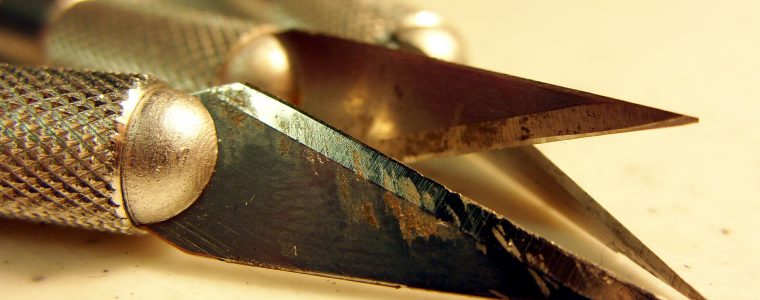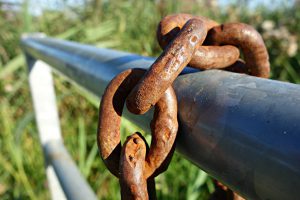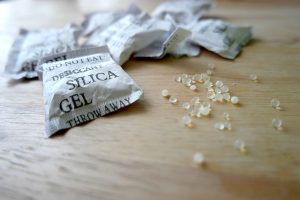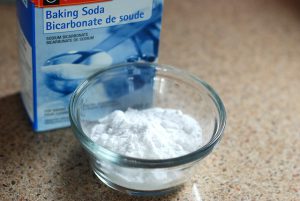
A Quick Rant Before We Get Into The Details!
Thanks for checking out Chef’s Corner (the blog role at myelectricknifesharpener), and I hope you’re having a smashing holiday season! Since I’ve seen lots of people run into the issue of rust & corrosion, I felt the need to make a post dedicated on how to remove rust from knives. Some of you may have solved this problem differently than what is suggested here, and that is okay. There is no one way to solve this problem. I urge you to share what worked for you with the rest of us!
 (There are multiple ways to deal with rust removal!)
(There are multiple ways to deal with rust removal!)
Important: In my personal opinion, there is no single knife that is impervious to corrosion & rust. The difference is simply that some are more rust-resistant than others. All materials are not immune to degradation. Let me reiterate that this is my opinion, and it doesn’t mean others will necessarily think the same.
What Is Rust & Corrosion, And Why Does It Happen Anyways?
Since this could be an entire post on it’s own, I’ll attempt to touch the surface and explain it as high level as I can. It’s important to know what rust is and how and why it happens, so we can better understand how to remove rust from knives or even reduce its chances of happening altogether. Corrosion, as defined by Wikipedia “is the gradual destruction of materials (usually metals) by chemical and/or electrochemical reaction with their environment”. Rust is simply a type of corrosion in which iron is oxidized in an electrochemical process to form rust (AKA iron oxide). So far so good? Great!
 (Rust, as seen above in its traditional reddish brown flaky appearance. Rust can also be yellow, orange, and even green.)
(Rust, as seen above in its traditional reddish brown flaky appearance. Rust can also be yellow, orange, and even green.)
Okay, now that we know what rust and corrosion is, let’s talk about why it happens and try to relate this with knives in particular. Rust only occurs in the presence of water and oxygen. Both of these conditions must be satisfied in order for iron to rust. Remember, that air contains 21% oxygen by volume. Air also contains a variable amount of water vapor (humidity). It should now make sense why rust is much more of a problem for people in humid environments. Another important point to note: Salt and acidic conditions speed up the rusting process. Okay, so how is all this relevant to my knife you ask? Here’s how: Your blade material is typically composed of either carbon, stainless, tool, or alloy steel (source: Wikipedia). All of these steels have some amount of iron in them. Aha! now we can see why rust is an issue! Hold your horses because in the coming sections we will talk about how to remove rust from knives.
Side Note: There are knives that are manufactured to handle the harshest of environments where rust formation would otherwise be rapid (scuba diving is an example). The manufacturers of these call them “corrosion proof” and guarantee that they will never rust. While I don’t disagree with them, I don’t agree either. Every material, no matter how well protected is susceptible to degradation over time, given the right conditions.
Preventing Rust By Proper Care & Maintenance
Taking care and properly maintaining your tools can significantly reduce the chances of rust formation. If you follow this approach, you won’t be concerned about how to remove rust from knives as it’s likely never to be a problem. Below are 3 tips you should absolutely follow, if you want your blades to last a life time!
Tip 1: Keep Your Knife Clean & Dry
I can’t overstate the importance of keeping your knife clean & dry. If you are working in a kitchen prepping meals, ensure you wash your knife thoroughly (get rid of small grit and dirt) and entirely and then proceed to wipe it down with a soft microfiber cloth. Make sure the whole tool is dry.
Tip 2: Store All Your Tools In A Cool, Dry Environment
I have my knives neatly stored in a kitchen drawer. Here’s a trick you could use if you store your cutlery in kitchen drawers as well: Remember those silica gel packets that come in the new shoes or electronics you buy? SAVE THEM next time you get your hands on some. The silica gel is essentially a desiccant that absorbs moisture in the air keeping it drier than the ambient. If you reduce the moisture in the air, you greatly reduce the chance of rust!

Tip 3: Lubricating Your Blade With Oil
This is actually a solution on how to remove rust from knives; many people scrub with oil to get rid of rust. Here i’ll be talking about lubricating with oil as a preventative measure. Applying a coating of oil after wiping your knife dry and clean is one of the best things you can do to prevent rust. The thin layer of oil prevents penetration of water and oxygen (the conditions required for rusting) thereby protecting the steel from rust. You should always use oils that are safe and edible, such as vegetable oils. Below is a video showing how to coat with oil (credit to Hawkeye Bushcraft).
How To Remove Rust From Knives (Prevention Is No Longer An Option)
This is when it’s too late and rust is already a problem. As I mentioned earlier, there are plenty of different ways on how to remove rust from knives, so I will only cover what I think are the 3 best ways.
Method 1: Baking Soda
Baking soda seems to be one of the most versatile household products out there; It can be used as an ingredient in various foods, as a mouth freshener, as a way to treat insect bites, and it’s so popular that’s it’s even found a place in pop culture and music (baking soda I got baking soda – leave a comment if you know what song I am talking about!). When talking about rust removal, baking soda tops my list simply because it’s cheap and readily available. Without further a do, here’s how to remove rust from knives using baking soda:
- Prepare a baking soda paste – Add a generous amount of baking soda powder to a container or glass. Mix this with water to create a paste. You don’t want the paste to be too thick or viscous, but you don’t want it to be too thin either. Aim for a maple syrup like consistency.

- Apply Paste – If you have light rust then you will want to apply the paste using a softer material such as a cloth or toothbrush. Scrub the paste gently along the rusted area in a back and forth motion until the rust clears. If you have heavier rust, use steel wool to scrub the paste onto the rusted area.
- Clean Your Tool – Once you’ve removed the rust, give your entire blade a thorough rinse and ensure it is completely dry afterwards.
Method 2: WD-40
WD-40 is another wonderful household product that you absolutely need to have in your home. WD-40, just like baking soda is a simple, cheap and effective solution for dealing with rust. Here’s what you need to know about how to remove rust from knives using WD-40:
- Spray WD-40 Generously On Your Blade Surface – Spray a generous amount on the surface of your knife. I like to cover the entire surface including the areas that are not affected by rust.
- Scrub With A Dishwasher Sponge – You could use steel wool if you have more heavy rust, but a dishwasher sponge should work just fine as well. Scrub by applying some pressure in a back and forth motion. Clean the rust off using a paper towel. Here’s a video demonstrating how much rust WD-40 is able to get rid off! (credit to TheSmokinApe). Once you are done, ensure you rinse, clean, and dry your tool thoroughly.
Method 3: Bar Keeper’s Friend
Another cheap, product that’s easy to use and does the job. You can find bar keeper’s friend in most hardware stores like home depot and lowes. Here’s what you need to know about how to remove rust from knives using bar keeper’s friend:
- Apply Generously On Blade Surface – I like to use the powder version of bar keeper’s friend, and I apply a generous amount to cover the entire surface of the blade.
- Scrub With A Dishwasher Sponge – Same deal as with the WD-40, scrubbing with a dishwasher sponge should do the trick. You should start to see results almost immediately after scrubbing! As always, remember to clean and dry!
Final Words
That’s it! This is my take on how to remove rust from knives. If you’ve taken away one thing from this post, it should be that preventative care and maintenance goes a long way! Properly caring for your tools can minimize the chances of rust formation entirely. If you do find rust, it is best to take care of it when it is small and on the surface. This is when it’s easiest to remove. Finally, I’d like to hear what worked for you. Do you have some other tips on how to remove rust from knives? Drop a comment and share below!
***Also, if you’re in the market for a knife sharpener, why not check out our reviews?***
Electric Knife Sharpener Reviews
Manual Knife Sharpener Reviews
